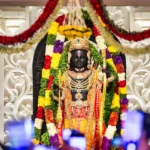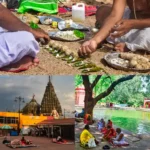Core Teachings of Buddhism – Buddhism 101
At the heart of Buddhism lies a simple but profound understanding of life and suffering. These teachings aren’t meant to be believed blindly—they’re meant to be explored and experienced firsthand. Here are the core concepts that form the foundation of Buddhist philosophy:
The Four Noble Truths
- The Truth of Suffering (Dukkha)
Life involves suffering—whether it’s physical pain, emotional stress, or dissatisfaction. Even pleasure can lead to suffering when it’s temporary or lost.
- The Cause of Suffering (Samudaya)
Suffering is rooted in desire, attachment, and ignorance. We crave things to be different than they are, and that craving creates inner turmoil.
- The End of Suffering (Nirodha)
It’s possible to end suffering by letting go of attachments and realizing the true nature of reality.
- The Path to the End of Suffering (Magga)
The Buddha laid out a clear path to liberation through ethical living, mental discipline, and wisdom—this path is known as the Eightfold Path.

The Eightfold Path
This is the roadmap to enlightenment, grouped into three core areas:
- Wisdom (Prajna)
- Right View: Understanding reRealitynd the Four Noble Truths
- Right Intention: Cultivating thoughts of renunciation, goodwill, and harmlessness
- Ethical Conduct (Sila)
- Right Speech: Speaking truthfully and kindly
- Right Action: Acting ethically and non-harmfully
- Right Livelihood: Earning a living in a way that doesn’t cause harm
- Mental Discipline (Samadhi)
- Right Effort: Cultivating positive mental states
- Right Mindfulness: Being present and aware in daily life
- Right Concentration: Deepening focus through meditation
Karma and Rebirth
In Buddhism, karma refers to intentional actions and their consequences—not just a cosmic scorecard. Good actions lead to positive outcomes, while harmful actions bring suffering. This cycle of cause and effect plays into rebirth, the idea that our actions shape our future experiences, even across lifetimes.
Nirvana: The Goal of the Path
Nirvana is the ultimate freedom—a state beyond suffering, ego, and craving. It’s not just a peaceful state of mind; it’s a complete liberation from the cycle of rebirth (samsara). It represents the end of suffering and the realization of profound inner peace.
Branches of Buddhism – Buddhism 101
Buddhism, like many ancient traditions, has evolved over time and across cultures. While all branches share the same foundational teachings of the Buddha, they differ in practices, scriptures, and interpretations. The three main branches of Buddhism are:
1. Theravāda Buddhism: The “Teaching of the Elders”
- Where it’s practised: Predominantly in Sri Lanka, Thailand, Myanmar, Laos, and Cambodia.
- Focus: Preserves the earliest teachings of the Buddha as found in the Pali Canon.
- Path to Enlightenment: Emphasizes personal meditation and ethical living, often following the monastic path.
- Goal: Achieving Nirvana through one’s efforts, mainly as an individual journey.
Theravāda is known for its minimalist approach and is sometimes considered the most “orthodox” form of Buddhism. Monastic life is central and lay followers support the monastic community through generosity and practice.

2. Mahāyāna Buddhism: The “Great Vehicle”
- Where it’s practised in China, Japan, Korea, Vietnam, and increasingly in the West.
- Focus: Stresses the role of compassion and the ideal of the Bodhisattva—someone who seeks enlightenment not just for themselves but to help all beings.
- Scriptures: Includes a vast range of sutras not found in the Pali Canon.
- Diversity: Mahāyāna encompasses many sub-traditions like Zen, Pure Land, and Nichiren Buddhism.
Mahāyāna opens the path to enlightenment to all people—monks and laypersons alike—and highlights the interconnectedness of all beings.
3. Vajrayāna Buddhism: The “Diamond Vehicle”
- Where it’s practised: Primarily in Tibet, Bhutan, and Mongolia; also found in parts of India and Nepal.
- Focus: A blend of Mahāyāna philosophy with tantric practices, rituals, and visualization.
- Unique features: Use of mantras, mudras, and mandalas as tools for transformation.
- Goal: Enlightenment in a single lifetime, using esoteric techniques passed down by qualified teachers.
Vajrayāna is deeply symbolic and ritualistic. It often includes complex teachings that are traditionally reserved for advanced practitioners under direct guidance.
Buddhist Practices – Buddhism 101
While Buddhist philosophy is deprofoundit’s the practices that bring those teachings to life. These practices vary across traditions, but they all aim to cultivate mindfulness, compassion, and insight. Whether you’re a monk in a monastery or a layperson in a busy city, Buddhist practices offer practical tools for inner peace and self-awareness.
Meditation
Meditation is at the heart of Buddhism. It’s the main tool for developing mindfulness, concentration, and insight.
- Vipassana (Insight Meditation): A practice of observing thoughts, sensations, and emotions to gain insight into the nature of reality. Popular in Theravāda traditions.
- Zen Meditation (Zazen): A seated practice focusing on posture, breath, and the stillness of mind, rooted in Japanese Zen.
- Metta (Loving-Kindness Meditation): A powerful method of generating compassion and goodwill toward oneself and others.
Meditation isn’t about emptying the mind; it’s about becoming aware of it.

Mindfulness in Daily Life
Mindfulness (sati in Pali) means being fully present in the moment. In Buddhism, it’s not just a buzzword—it’s a transformative practice. Whether you’re eating, walking, or washing dishes, doing it with full attention turns everyday actions into opportunities for awakening.
Chanting and Rituals
While not universal to all Buddhists, many traditions use chanting and rituals as a form of devotion and mental training. These might include:
- Reciting sutras or mantras
- Lighting incense or offering flowers at a shrine
- Prostrations or bowing as a form of respect
These practices help focus the mind and express gratitude and reverence.
The Role of Monastic Life
Monks and nuns in Buddhism often lead a disciplined life of study, meditation, and service. In many cultures, they serve as teachers and spiritual guides. Laypeople support the monastic community through acts of generosity (dāna), and in return, they receive teachings and inspiration.
However, you don’t have to be a monk to practice Buddhism. Many lay practitioners meditate, study, and follow ethical principles in their daily lives.






























